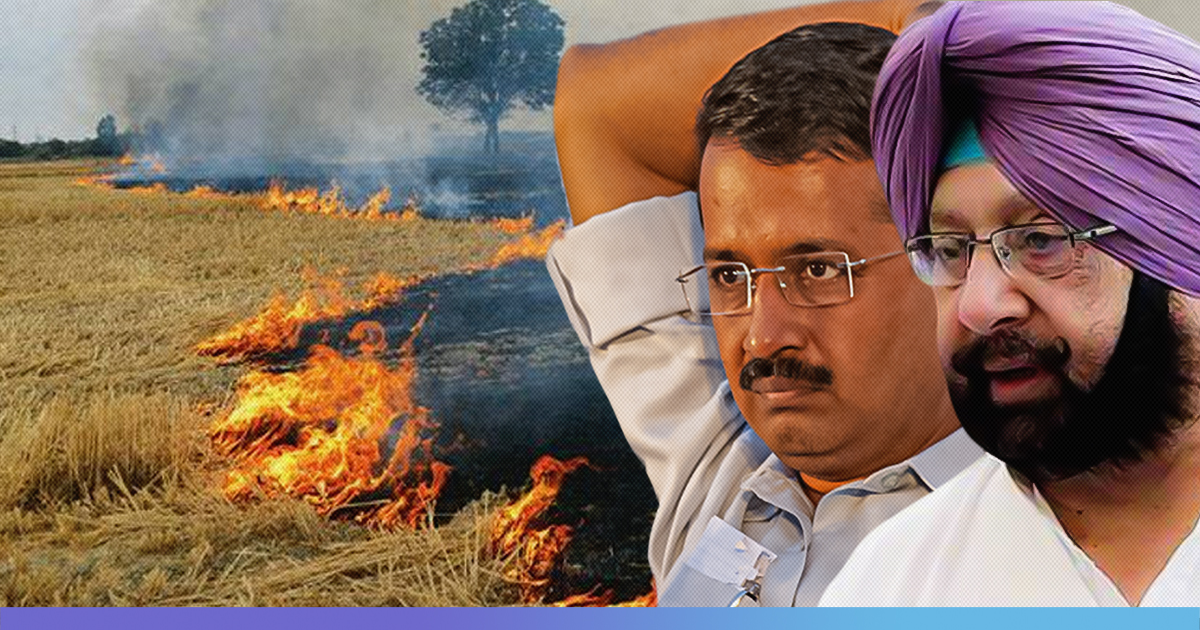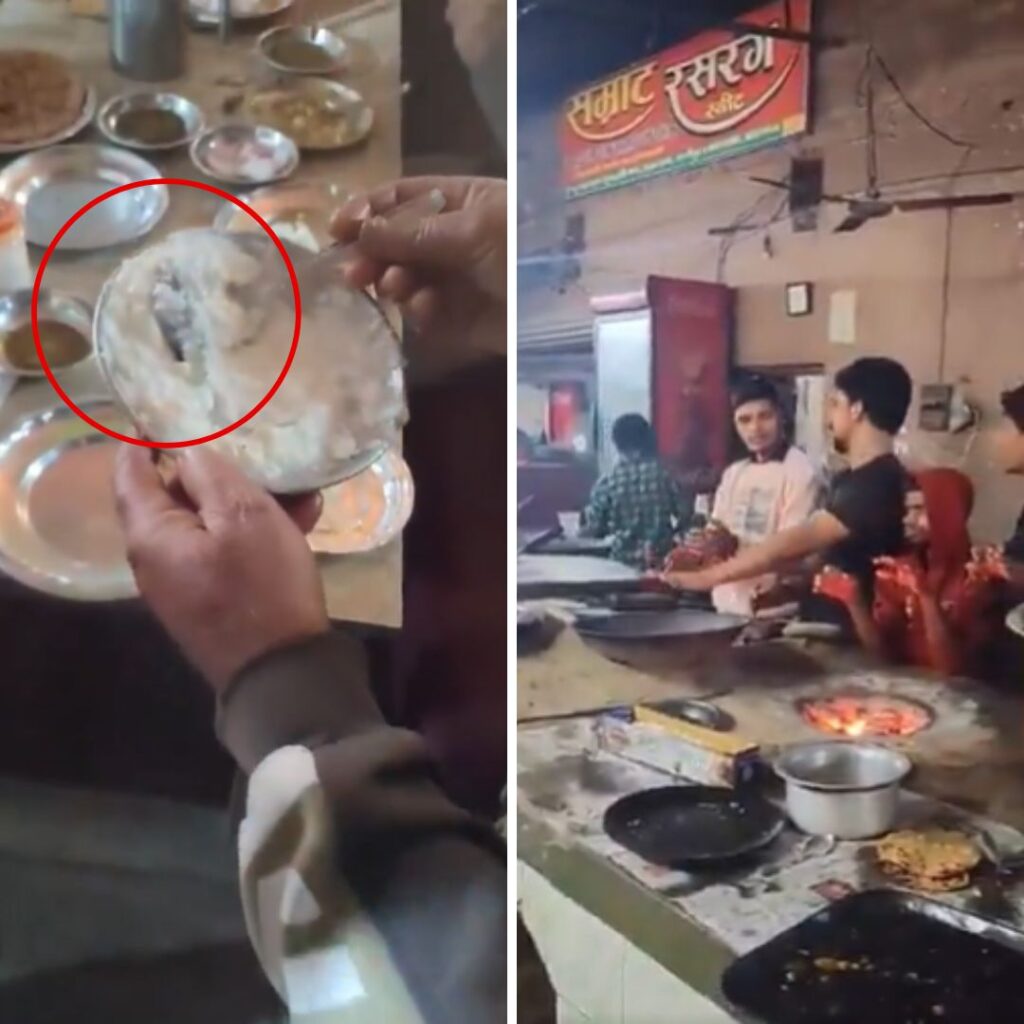Farm fires in Punjab peaked a day after Diwali, October 28, with 3,105 incidents of crop residue burning being reported from across the state in one day. These farm fires have contributed to the toxic air pollution in Delhi which is expected to touch this year’s peak value now, the Delhi government said on Tuesday.
Toxic Air Quality In Delhi
National Capital Region continued to see a blanket of smog after Diwali as pollution levels deteriorated to the “severe” category. The fall in air quality can be “purely” attributed to stubble burning in nearby farm states, whose share in Delhi’s pollution rose to the season’s highest of 35% on Wednesday, said the Centre-run System of Air Quality and Weather Forecasting And Research, or SAFAR.
The stubble burn and fumes from northwest regions have contributed significantly to the adverse air quality of Delhi. This was shared by the Delhi Government along with the NASA’s satellite imagery and stubble burning projections of the Ministry of Earth Sciences’ air quality monitor, SAFAR.
Spike In Stubble Burning
The recent NASA images show a drastic spike in crop residue burning in the two neighbouring farm states, which has severely affected Delhi’s air quality.

In Haryana, over 3,700 farm fires were recorded between September 23 and October 27 this year. Data from the Punjab Remote Sensing Centre shows that between September 23 and October 28, 15,132 stubble burning incidents were recorded in Punjab. A total of 24,593 incidents were reported during the same period in 2016; 16,533 in 2017; and 12,762 in 2018.
“The effective stubble fire counts in Haryana and Punjab have increased from 1,654 to 2,577 in the past 24 hours, which is a matter of extreme concern for the residents of Delhi,” the state government said.
It also claimed that the transport-level wind direction was north-westerly on Tuesday, which might lead to an increase in the share of stubble plume in Delhi’s pollution.
“As per SAFAR model, the stubble share may touch this year’s peak value now,” it said. The Central Pollution Control Board has recommended extending the ban on night-time construction in Delhi-NCR till November 2.
The states of Punjab and Haryana have recorded an increase of at least 2,400 farm fires, till October 27, according to government data. The number of farm fires has been on an unprecedented rise despite the central government rolling out strict directions to stop stubble burning completely.
SAFAR on Tuesday predicted that the percentage of PM 2.5 concentration in the air from stubble burning is likely to jump to 29% on Wednesday. It was 25% on Monday.
What PM 2.5 Pollution Really Means And How It Is Affecting You
All of us are talking about air pollution nowadays. More than poisonous gases what affects us most is particulate matter 2.5 (PM 2.5). Know about it #In2Minutes. This video is part of the campaign #WhatWeBreathe. This week with the help of experts at Lung Care Foundation, Huma Lung Foundation and Healthy Energy Initiative India, we are deep diving into the health implications of air pollution.
The Logical Indian ಅವರಿಂದ ಈ ದಿನದಂದು ಪೋಸ್ಟ್ ಮಾಡಲಾಗಿದೆ ಬುಧವಾರ, ಅಕ್ಟೋಬರ್ 30, 2019
Blame Game, But No Responsibility?
Delhi Chief Minister Arvind Kejriwal appealed to Punjab and Haryana to take stringent steps against stubble burning to prevent the national capital from becoming a “gas chamber”.
However, Punjab Chief Minister Amarinder Singh criticised Kejriwal for the same. “The air pollution in New Delhi was directly related to the rampant construction activity, widespread industrialisation and total mismanagement of the city traffic,” Singh said. He claimed Kejriwal was trying to “divert public attention from his own government’s failures” by indulging in such “outright lies”.
“If stubble burning was the primary cause of Delhi’s air pollution, as Kejriwal claimed it to be, then how could he explain the atrociously high AQI in the national Capital even during months of December and January,” Singh asked. He asked Kejriwal to explain how the air quality index in Punjab, where the stubble burning incidents took place, was much better than Delhi.
Singh also blamed firecrackers and Aam Aadmi Party’s failure to control the spike in air pollution in the national capital.
Incentives For Farmers
The period between October 15 and November 15 is considered critical as the maximum number of stubble burning incidents take place in this time period in Punjab and other farm states. Despite a ban on stubble burning in Punjab and Haryana, farmers continue to violate it because of lack of financial incentives.
State governments have run a massive awareness campaign against stubble burning and have given 50-80 per cent subsidy to farmers and cooperative societies to purchase modern farm equipment. Under a 2015 order of the National Green Tribunal, the state governments have also been issuing challans against farmers found burning crop residue based on the size of land they own.
However, the Punjab and Haryana High Court’s September 19 order, staying the recovery of fine from farmers defying the ban on stubble burning, has subdued the effect of challans, a Punjab government official said.
Also Read: Know How Was The Air Quality In Delhi, Mumbai & Kolkata Post Diwali Eve











